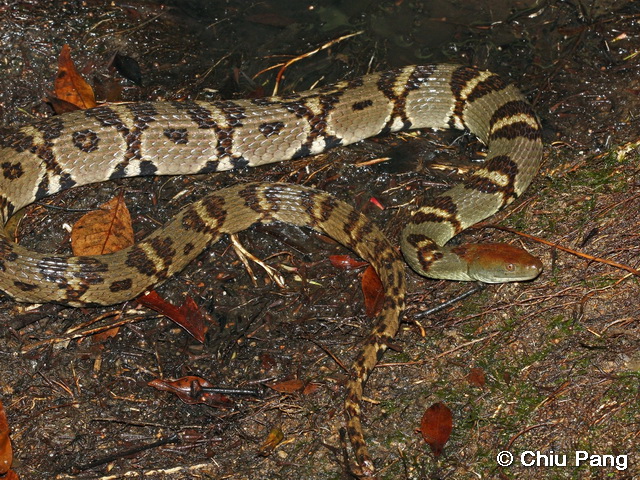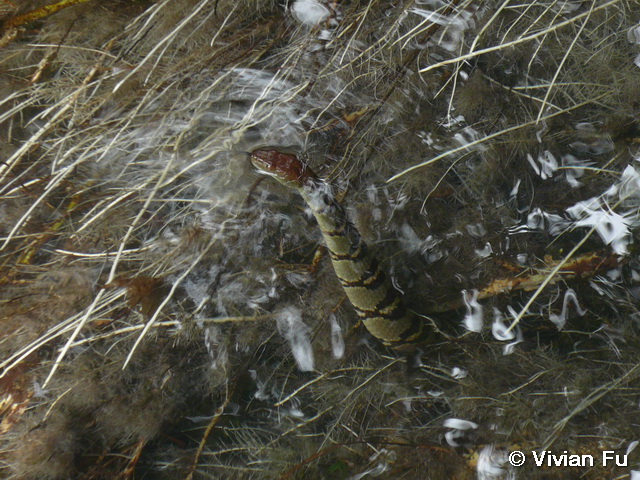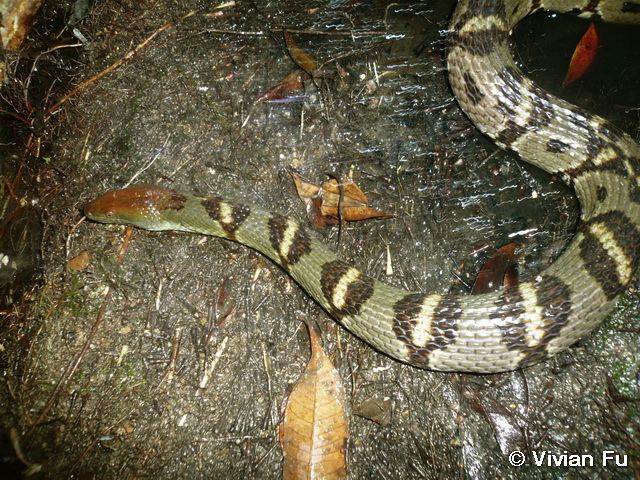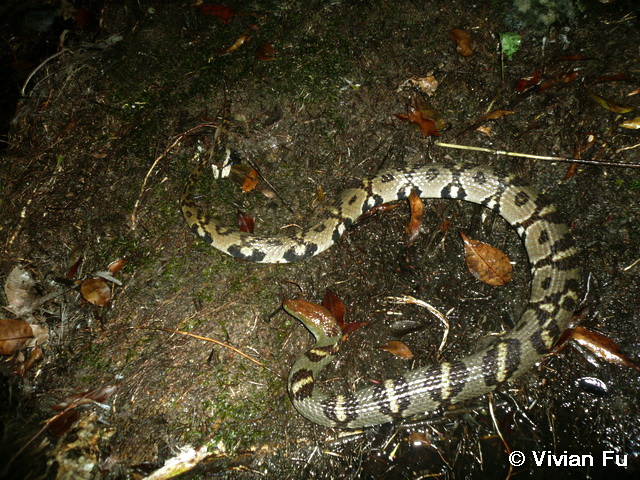Sinonatrix aequifasciata (Barbour, 1908)
Diamond-backed Water Snake 環紋游蛇
(Non-venomous)
Suborder
Serpentes 蛇亞目
Average 70 - 90 cm, may grow up to 140 cm;
Back colour greyish-olive, with distinctive “8-like” diamond-shaped brown bands with light centres and black edges over dorsum and flanks.
A single dark brown spot may be present in the middle of the spaces between bands.
Ventrals white with incomplete black bands.
Head red on top, long and triangular. Iris light orange.
Labials olive-coloured. Adult males have small papillae on the chin shields.
Body stout and robust. Tail long. Scales roughly keeled.
Inhabits big, rocky streams in forested areas, in particular streams with moderate current, large deep pools, an abundance of fish and overhanging vegetation which can be used as a perch by the snake.
Occurs sympatrically with Bicoloured Stream Snake (Opisthotropis lateralis) and Striped Stream Snake (O. kuatunensis).
Strictly nocturnal, but has been seen active at dusk on drizzly days.
Usually rests 50 - 200 cm above the water and can climb as high as 8 m.
Unlike Opisthotropis sp., is not commonly found hiding under rocks.
Same perch site may be shared by more than one snake.
Forages in quiet pools instead of cascading water.
When disturbed, drops into the water, and either swims away on the surface or dives to the bottom.
Assumes a S-shaped stance as a sign of striking.
Bites fiercely and defecates when captured.
Oviparous. A single female was reported to have 20 eggs.
First recorded in Hong Kong in 1978 in the Shing Mun Reservior area.
Subsequent records were made from Shek Kong, near Lam Tsuen and Mui Tsz Lam (梅子林).
Locally common in some New Territories streams, but the construction of reservoirs and catchwaters has probably caused a loss of much suitable habitat.
Occurs throughout central and southern China.






